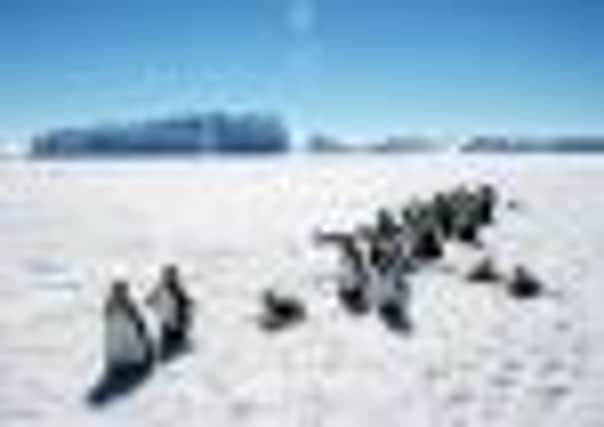Satellite photos double known number of emperor penguins


Scientists used Very High Resolution satellite images to estimate the population of penguin colonies around the Antarctic coastline.
British Antarctic Survey (BAS) researchers counted 595,000 birds, almost double previous estimates of between 270,000 and 350,000.
Advertisement
Hide AdAdvertisement
Hide AdOn ice, the black and white plumage of emperor penguins makes colonies clearly visible in the satellite images.
The scientists studied 44 colonies around Antarctica, seven of which were unknown before.
BAS geographer and lead author Peter Fretwell said: “We are delighted to be able to locate and identify such a large number of emperor penguins.
“This is the first comprehensive census of a species taken from space.”
The findings are reported in the online journal Public Library of Science One. They are welcome boost to conservationists who have grown worried about the future of the birds.
Scientists fear that in some regions of Antarctica earlier spring warming is leading to loss of sea ice habitat for emperor penguins, making their northerly colonies more vulnerable to climate change.
BAS biologist Dr Phil Trathan said: “Whilst current research leads us to expect important declines in the number of emperor penguins over the next century, the effects of warming around Antarctica are regional and uneven.
“In the future, we anticipate that the more southerly colonies should remain, making these important sites for further research and protection.”
Advertisement
Hide AdAdvertisement
Hide AdThe study found that some colonies have disappeared altogether because of changing weather patterns.
Previous counts have been inaccurate due to rough terrain that made some colonies inaccessible, along with inhospitable temperatures that can plummet to -50C.
This time the group, a collaboration between the Australian Antarctice Division (AAD), the British Antarctic Survey, the University of Minnesota/ National Science Foundation and the Scripps Institution of Oceanography, used aerial photography to calibrate their analysis of counts taken on the ground.
The technique also has the advantage of having no negative impact on the sensitive Antarctic environment or the birds.
“Most of the time it is impossible to take into consideration every single colony, but now we are in a position that we can actually compare how the sea ice environment changes and hopefully continue to monitor the population – and see which ones may or may not be decreasing in size,” said Barbara Wienecke, a sea bird ecologist with the AAD, speaking from the Aurora Australis research vessel.
The larger population may also put pressure the numbers of krill in the oceans, an essential food for the penguins.
Warming oceans, observed by the research team, can also have an impact.
Of particular concern is what happens with “long fast ice” – ice that is attached to the continent and forms a continuous flat area of frozen ocean.
Such ice is where most of the penguin colonies are found, the flat surface is essential for the male penguins who incubate their egg on their feet.